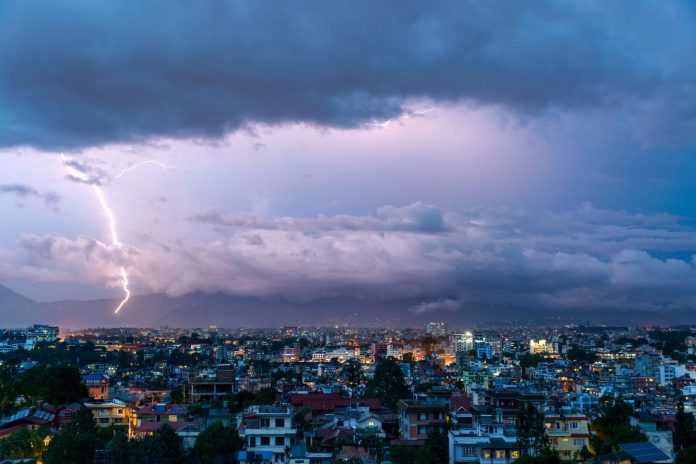
Nepal presents a powerful success story in renewable energy initiatives
Text Michael Northrop & Bikash Pandey
Nepal offers an unusually positive example of a poor country whose strategies for development are simultaneously addressing climate change. It isn’t immediately obvious travelling through polluted Kathmandu, but a more careful look at the country as a whole reveals striking success at creating an all-renewable electricity system, a growing fleet of electric vehicles and motorbikes, renewable cooking systems, and a reforestation programme that is rapidly bringing forests back all across Nepal.
Given all this, it is accurate to proclaim Nepal as a leader in the fight against climate change. For a country struggling with severe poverty and the lingering impacts of the severe 2015 earthquake, it is more than a little admirable how much Nepal has done already to build a clean energy economy.
Take a look at Nepal’s electricity system. Domestic generation is 100-percent hydropower-based and therefore 100-percent renewable. Government incentives for small and medium hydroelectric power, coupled with availability of credit from Nepali banks, have encouraged independent power producers to bring on line hundreds of new megawatts of hydropower. In addition to having a zero-carbon record, these new electricity reserves are expected to end the country’s chronic power shortages and stem the import of coal-generated power from India starting in 2018.

Private entrepreneurs in Kathmandu have also developed a network of battery charging stations that successfully electrify hundreds of tuk-tuks which transport workers around the Kathmandu Valley. All of the electricity powering these batteries comes from hydropower facilities, which means that these vehicles are also zero carbon.
In addition, hundreds of electrified motorbikes are on the streets of Kathmandu and others cities around the country. Nepal has among the largest fraction of electrified transportation globally. And it’s growing. Given the increase in population and the growing air quality concerns in its population centres, this is a welcome development that must continue to spread. Not surprisingly, importers of petrol and diesel vehicles and fuel are actively working to slow adoption of additional electric transportation use in Kathmandu, but the recent blockade of goods crossing the India-Nepal border has impressed on most Nepalis the need to be more independent of petroleum imports. Electrified transportation is seen as an important avenue to energy independence.
Nepal has also developed an extensive biogas programme to fuel rural households’ cooking needs. Inexpensive biogas systems using livestock waste are a standard feature of rural homes across Nepal. Over 100 companies install the technology and have sold more than 300,000 systems nationwide. Credit from microfinance institutions has been helping the poorest rural households pay for installation of these systems.
State-sponsored rural solar programmes have also brought electricity for lights to unconnected rural households. These programmes serve almost every community in Nepal now, with over half a million homes sporting a panel on their roof. The government has also recently begun to provide incentives for rooftop solar photovoltaic (PV) systems in cities to counter still-occurring power outages. These PV systems for electricity complement already extensive use of solar-powered hot water systems by urban residents.
Nepal has also done great things on land use over the last several decades. Its innovative community forest management programme has massively increased forest cover across the country over the past two decades, and has improved the ability of degraded lands to serve some 20,000 communities’ economic needs, protect biodiversity, improve water management, and sequester carbon.
Nepal, like many developing nations, is eager to receive international support for its climate mitigation and adaptation needs, hoping to have rich nations, who are responsible for the majority of global emissions, pay the bill for energy and climate adaptation. The reality, though, of rapidly spreading climate impacts and human development needs has encouraged Nepal to move ahead with these programmes even without the larger flows of foreign aid it has hoped to receive. The nine projects and programmes of activities that the country has registered under the United Nations Clean Development Mechanism, covering biogas digesters, improved water mills, improved cook stoves, micro-hydropower systems and solar home systems provide revenue to partially support these national programmes, but account for only a fraction of the contribution these programmes have made to reducing emissions of greenhouse gases.

Climate impacts are here now and Nepal realises it must act. Aid and technical assistance are still badly needed and more would be very well used, but Nepal is a great example of a country boldly taking important steps other poor nations can learn from.
Nepal has a track record that should enable it to attract additional aid resources and private investment if its progress were more fully known. Its hydropower development, clean transport infrastructure, urban and rural solar programmes, and its community forest programmes could all grow at a faster clip with the help of additional investments. Nepal would benefit more from its work to date by broadcasting its effectiveness. Donors of all kinds would be encouraged to contribute and invest more given the success thus far.
Lessons from Nepal could potentially be adapted elsewhere. For example, some African nations, which made enormous commitments to land restoration at the Paris climate conference in December 2015, might draw lessons from Nepal on how to reforest lands in cooperation with rural communities. Africa’s other enormous Paris commitment – to develop 300 gigawatts of renewable energy – could also be informed by the remarkable work Nepal has done to develop hydropower, solar and biogas energy.
As the globe hurtles toward a future very much affected by climate change, Nepal offers a powerful example to other poor countries. In the wake of last year’s Paris climate agreement, Nepal also presents a great opportunity for donor countries and impact investors seeking to encourage and invest in low carbon development.
For more stories and photographs from the issue, see Asian Geographic Issue 123, 2017










